Trail

- Petroglyphs
- 10Petroglyphs of Daegok-ri
- 11Petroglyphs of Cheonjeon-ri
- Museums
- 1Ulsan Petroglyph Museum
- 13Ulsan Daegok Museum
- Cultural Heritages
- 2Jipcheongjeong Pavilion
- 3Bangudae Terrace
- 4Bangu(bango) Sewon Neo-Confucian Academy
- 5Stele at Bango Seowon Neo-confucian Academy
- 6Moeunjeong Pavilion
- 7Yeon-lo Gaesugi rock engraving
- Natural Heritages
- 8Mt. Dongmaesan Natural Wetlands
- 9Dinosaur footprint fossils at Daegok-ri
- 12Dinosaur footprint fossils at Cheonjeon-ri
Recommended courses around the trail
Half-day course (2.4km / 1hour round trip)
- 1Ulsan Petroglyph Museum
- 2Jipcheongjeong Pavilion
- 3Bangudae Terrace
- 4Bangu(bango) Sewon Neo-Confucian Academy
- 5Stele at Bango Seowon Neo-confucian Academy
- 6Moeunjeong Pavilion
- 7Yeon-lo Gaesugi rock engraving
- 8Mt. Dongmaesan Natural Wetlands
- 9Dinosaur footprint fossils at Daegok-ri
- 10Petroglyphs of Daegok-ri
- 1Ulsan Petroglyph Museum
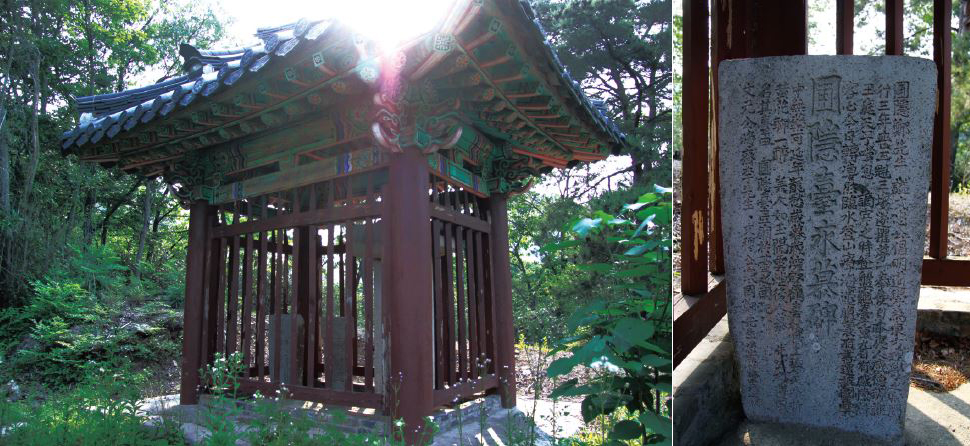
Stele at Bango Seowon Neo-confucian Academy
The Stele for Jeong Mong-ju at Bangoseowon Confucian Academy is a stele erected to honor the academic virtues of Jeong Mong-ju, a loyal subject and Confucian scholar who lived at the end of the Goryeo Dynasty. In 1375 (first year of King Uwang), Jeong Mong-ju opposed the pro-Yuan policy of rejecting the Ming Dynasty of China and maintaining friendly relations with the Yuan Dynasty. As a result, he was exiled to Eonyang, Ulju-gun, for over a year. It is said that, during that time, he wrote poems and left behind much evidence of his stay there. In 1712 (38th year of King Sukjong), scholars in Eonyang erected Bangoseowon to honor Poeun Jeong Mong-ju, Hoejae Yi Eon-jeok, and Hangang Jeong Gu, three scholars with outstanding virtues. However, during the reign of King Gojong, it was damaged. Subsequently, three other steles were erected: Poeun Dae-yeongmobi (1885), Poeun Dae-sillokbi (1890), and Stele for Jeong Mong-ju at Bangoseowon Confucian Academy (1901). In 1965, due to the construction of Sayeon Dam, the monument was moved to its current location, where a protective pavilion was erected to preserve the stele.
Bangu(Bango) Seowon Neo-coonfucian Academy
Bangoseowon is a Confucian academy that was established in 1712, the 38th year of King Sukjong's reign, by scholars in Ulsan to honor the three great scholars: Poeun Jeong Mong-ju (1337-1392), Hoejae Yi Eon-jeok (1491-1553), and Hangang Jeong Gu (1543-1620). It was destroyed by fire in 1728 (fourth year of King Yeongjo), but was rebuilt the following year and closed during the reign of King Gojong. It was rebuilt in 1983 under the name “Banguseowon” and still stands today. Every year in March of the lunar calendar, the Banguseowon Steering Committee organizes the Samhyeonje ancestral rites.
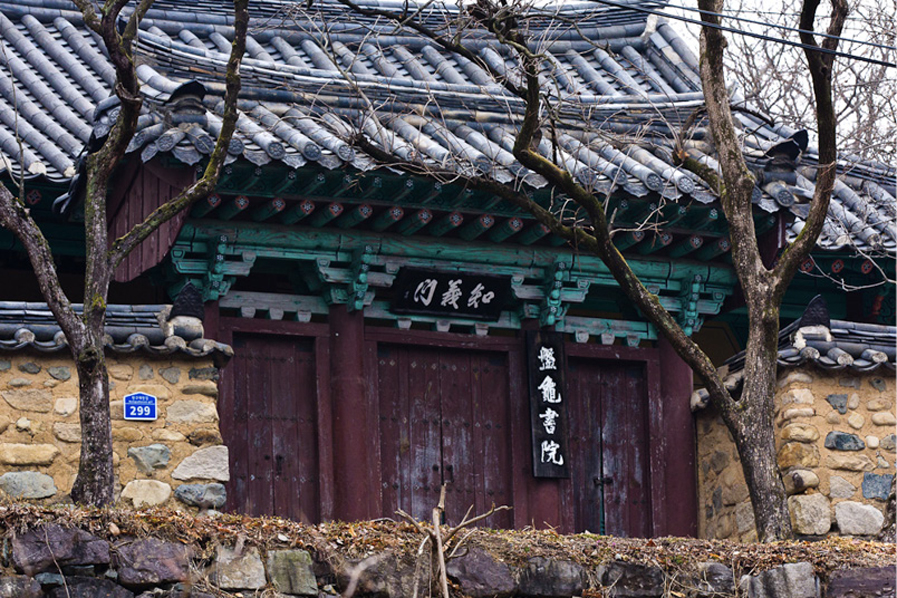
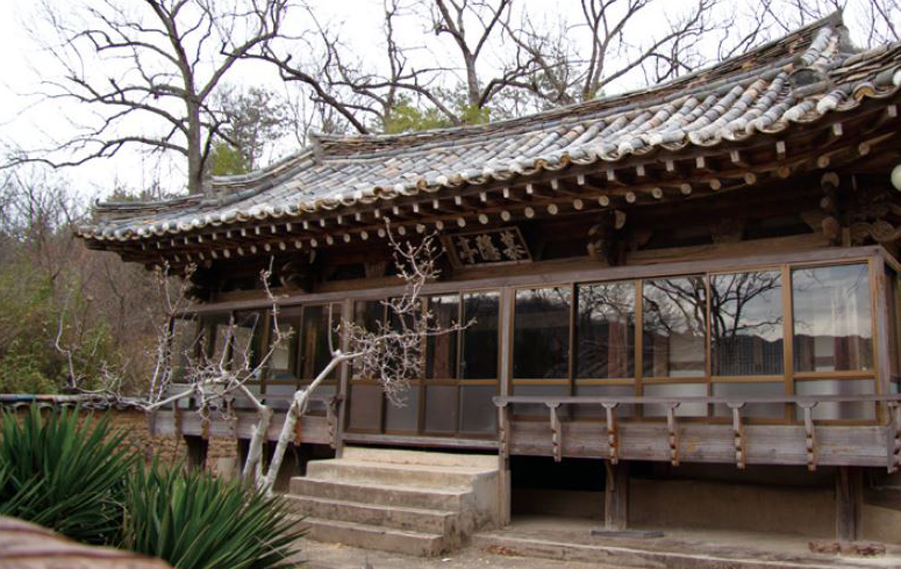
Moeunjeong Pavilion
Moeunjeong is a pavilion that was established by the Cheongan Yi clan as a tribute to the virtuous qualities of the famous Confucian scholar, Poeun Jeong Mong-ju. In the late 19th century, Gurin Yi Yong-pil (1849-1906) attempted to build a pavilion in the scholar’s honor but passed away before his dream could be realized. In 1920, his son, Yi Jeong-hyeok, and brothers fulfilled his wish by constructing the pavilion. This place also holds significance as the origin of the scholarship of Dongcho Yi Jin-yeong (1919-1993), the grandson of Yi Yong-pil and a prominent figure in Korean classical literature during the latter half of the 20th century.
Jipcheongjeong Pavilion
Jipcheongjeong is a pavilion of the Choi clan in Gyeongju that was built in 1713 (39th year of King Sukjong) by Unam Choi Shin-gi (1673-1737). It was a place to which literati from all over the country came to write poetry and discuss their studies. Later, Choi Jun-sik (Choi Kyung-hwan, 1909-1978), the ninth-generation descendant of the original builder, organized 406 of the Korean poems stored in Jipcheongjeong and published Jipcheongjeong Poetry Collection. The current building was renovated in 1932 and is now used as a tea room and etiquette training center.
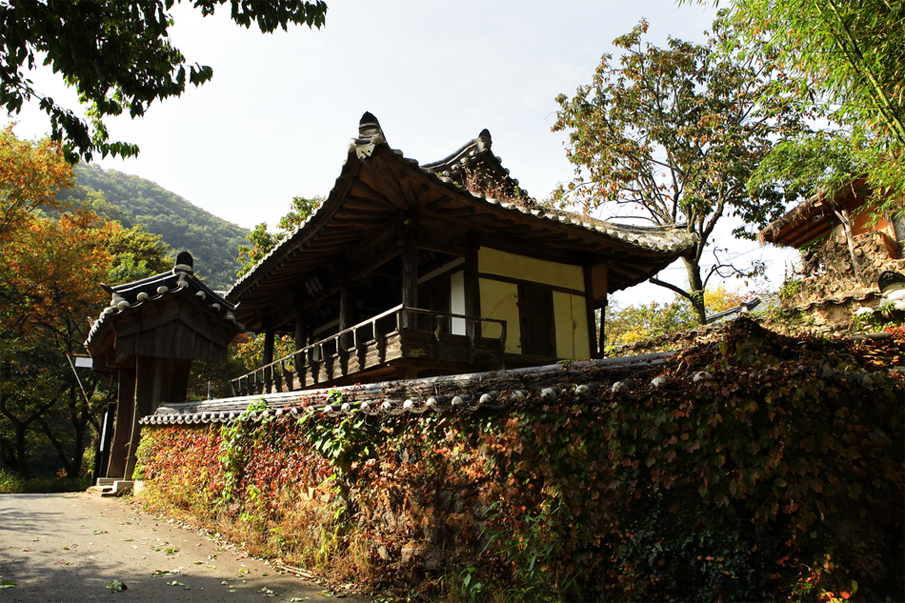
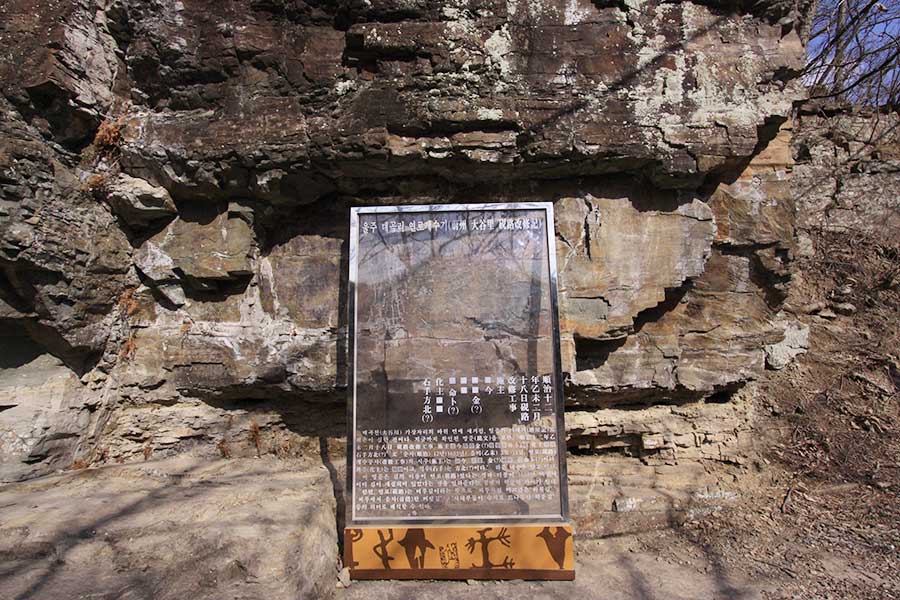
Yeon-lo Gaesugi rock engraving
This is an inscription, carved into the rock face at the edge of a semicircular creek, that lists the names of the builders, financiers, and masons who completed the construction of Yeonro Road on February 18, 1655, in the 12th year of the reign of Shunzhi. This inscription is of academic value because it indicates that the road was named "Yeonro" and that it had already been laid before 1655. “Yeonro” means “inkstone road” and can be interpreted to mean "a slippery path like an inkstone," "a narrow cliff path," or "a scholarly path frequently traversed by scholars."
Dinosaur footprint fossils at Cheonjeon-ri
Dinosaur footprint fossils are important resources that can reveal the types of dinosaurs that lived in an area as well as the routes they followed, behavior, and lifestyle. On the rocks opposite the Petroglyphs of Cheonjeon-ri, about 130 footprint fossils of sauropods and ornithopods, herbivorous dinosaurs from the Early Cretaceous period, about 100 million years ago, can be found. The sauropod footprints range in size from 60 to 80 centimeters, and the ornithopods footprints range in size from 24 to 40 centimeters. The layers where these fossils were discovered belong to the variegated beds of medium-gray pelite and hornfels and are part of the Gyeongsang Supergroup, Hayang Formation, and Daegu Formation.
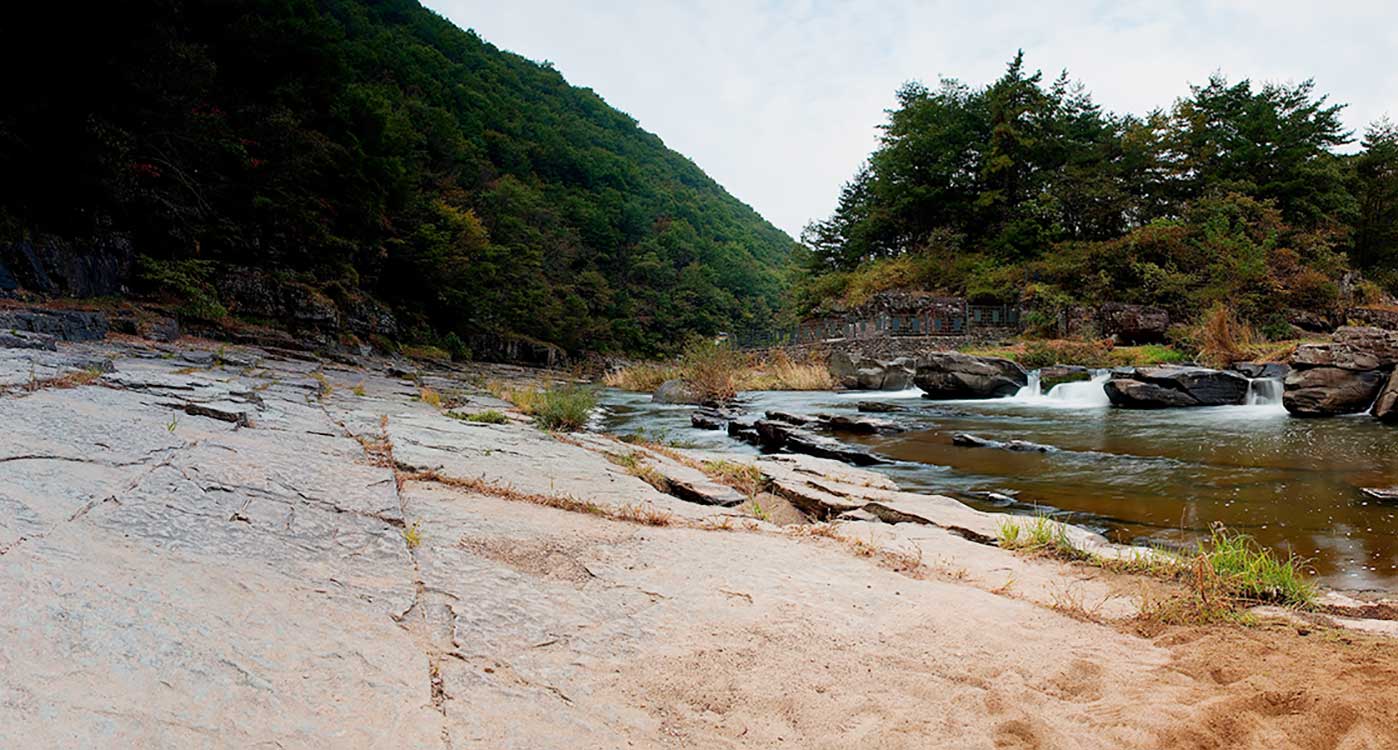
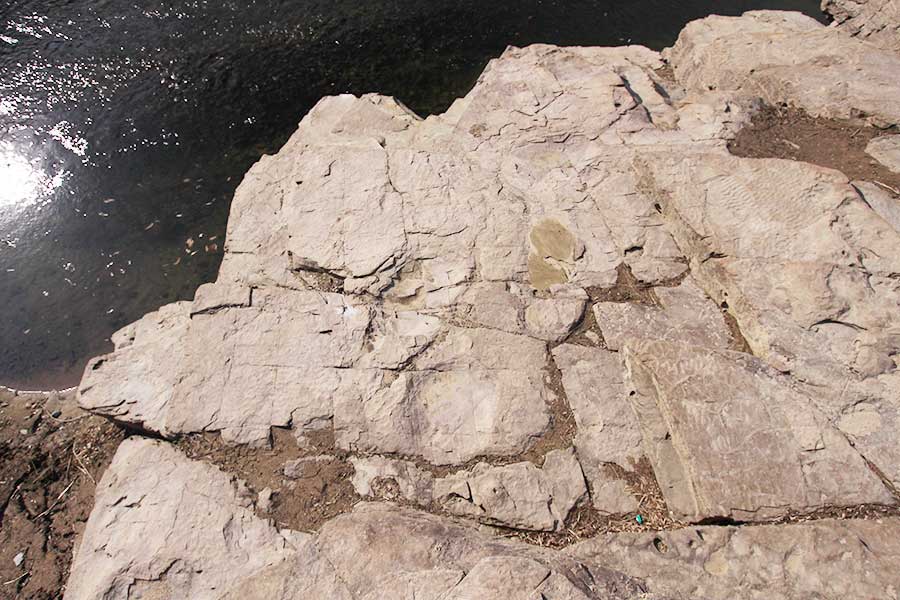
Dinosaur footprint fossils at Daegok-ri
About eight footprint fossils of herbivorous dinosaurs, sauropods and ornithopods, are found along the stream entering the Petroglyphs of Bangudae Terrace in Daegok-ri. The layer where the fossils were discovered belongs to the fine-grained sandy mudstone layer and is part of the Hayang Formation, a depositional unit within the Gyeongsang Basin. Along with the dinosaur footprints, sedimentary structures such as ripple marks, mud cracks, and trace fossils of invertebrates are observed, and the ripple marks are particularly well developed, indicating that the formation was deposited in a floodplain around a river.








